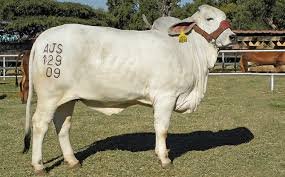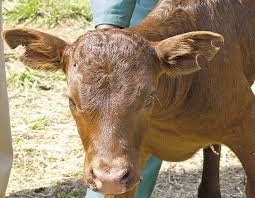Introduction
Animal identification is the process of marking animals in a way that allows them to be individually recognized. It is essential for farm management, breeding programs, health monitoring, insurance, and traceability. Proper identification helps in maintaining accurate records and preventing theft or loss of animals. Different methods are used depending on the type of animal, purpose, and available resources.

Summary of Animals Identification Method
- Animals are identified through permanent marks such as ear tags, microchips, or branding and advanced methods like RFID, DNA, and biometric scans, ensuring accurate, lifelong tracking.
- Proper identification helps track ownership, health, breeding, disease, and legal compliance while preventing theft and improving management and food safety.
- Modern solutions like muzzle-print recognition, facial recognition, QR tags, and GPS collars enable non-invasive, high-accuracy animal identification, boosting traceability and animal welfare.
Table of Contents
TYPES OF ANIMAL IDENTIFICATION METHODS
PERMANENT METHODS
BRANDING

Branding involves marking the skin of the animal using hot or cold instruments to create a permanent scar.
Hot Branding
This method uses a heated metal symbol to burn a mark onto the skin. It is commonly used for cattle and is easily visible. However, it can be painful and may cause injury if not done properly.
Cold Branding
Also known as freeze branding, it involves using extremely cold tools (usually with liquid nitrogen or dry ice) to kill pigment-producing cells. The result is a white-colored scar. This method is less painful and preferred for animals with dark coats.
TATTOOING
Tattooing involves imprinting numbers or letters inside the ear using a tattooing tool and ink. This method is widely used for small animals like rabbits, goats, and pigs. It is permanent and painless but may be hard to read from a distance.
EAR NOTCHING

This method involves cutting V-shaped notches on the edges of the ears in a specific pattern to assign a number. It is commonly used in pigs for litter and individual identification. It is simple and cost-effective but requires careful planning.
EAR TAGGING
Ear tags are plastic or metal pieces attached to the ears of animals with a number or barcode. This is one of the most common methods and allows easy identification at a glance. Ear tags can be color-coded for different farms or categories.
MICROCHIPPING
Microchips are small electronic devices inserted under the skin using a syringe. They carry a unique ID number readable by a scanner. It is widely used in pets, horses, and expensive livestock. It provides secure and tamper-proof identification but requires a reader to access the information.
RETINAL SCANNING
This biometric method uses unique patterns in an animal’s retina (eye) for identification. It is accurate and non-invasive but expensive and requires advanced equipment.
DNA PROFILING
DNA fingerprinting is used to identify animals based on their genetic makeup. It is used in research, breed registration, and animal forensics. This method is the most accurate but also the most costly.
TEMPORARY METHODS
PAINT MARKING
This involves applying temporary colored paints or dyes to the animal’s body. It is commonly used in markets, research, or short-term trials. Paint wears off over time, making it unsuitable for long-term identification.
NECK STRAPS OR COLLARS
Animals like goats, cows, and dogs may wear numbered collars or straps. These are temporary and easy to use but can be lost or damaged.
CRAYON OR CHALK MARKING
Marking animals with chalk or livestock crayons is often used for sorting or during mating. It is temporary and fades with weather or washing.
ELECTRONIC IDENTIFICATION SYSTEMS
RFID (RADIO FREQUENCY IDENTIFICATION)
RFID tags are advanced tools that carry a chip and antenna, allowing electronic reading of the animal’s ID from a distance. These are often embedded in ear tags or collars and used for automated tracking and data recording in modern farms.
Advantages of RFID
- Fast and easy to scan multiple animals.
- Reduces human error.
- Helps in automated feeding and health monitoring systems.
USES OF ANIMAL IDENTIFICATION
- Record Keeping: Maintains details of birth, vaccination, breeding, and production.
- Health Monitoring: Tracks disease history and medical treatments.
- Insurance and Ownership: Confirms ownership for insurance or disputes.
- Traceability: Ensures food safety by tracing origin during outbreaks.
- Research and Performance Monitoring: Useful in experiments or breeding programs.
FACTORS AFFECTING SELECTION OF IDENTIFICATION METHOD
- Species and Breed: Some methods suit cattle, others are better for poultry or pets.
- Cost: Expensive methods like microchipping may not be suitable for large herds.
- Permanence: Consider if temporary or permanent identification is needed.
- Ease of Application: Some methods need training or special tools.
- Animal Welfare: Methods should minimize pain and stress.
ETHICAL CONSIDERATIONS AND ANIMAL WELFARE
Animal identification should be carried out with minimal pain and stress. Using trained personnel, proper hygiene, and suitable tools is important. Non-invasive and modern technologies are encouraged over painful traditional methods. Humane practices not only protect animals but also improve their productivity and trust.
RECENT ADVANCES IN IDENTIFICATION TECHNOLOGY
QR CODE TAGS
These tags include QR codes that can be scanned with smartphones for instant access to animal profiles.
FACIAL RECOGNITION SOFTWARE
New AI tools can identify individual animals by analyzing facial features, particularly useful in dairy and poultry farms.
GPS-BASED COLLARS
Used for tracking free-range animals, wild species, or high-value livestock, helping in monitoring location and movement patterns.
CONCLUSION
Animal identification plays a crucial role in modern livestock and pet management systems. It supports disease control, traceability, theft prevention, and data collection. Choosing the right method whether traditional like branding or modern like RFID and microchips depends on animal type, farm scale, and economic resources. With growing technology and concern for animal welfare, more humane and efficient methods are emerging. Investing in accurate and ethical identification enhances productivity, enables precise record-keeping, and strengthens the overall livestock management system. For sustainable livestock development, a balance between technological adoption and animal-friendly practices is the key to progress.
Frequently Asked Questions (FAQs)
What is RFID and how is it used in animal ID?
RFID uses electronic tags embedded with chips and antennas, allowing contactless scanning of animals at key points, speeding up data capture, reducing human error, and enabling real-time management .
Are biometric methods like muzzle prints reliable for livestock?
Yes, biometric ID using muzzle patterns or facial features provides permanent, tamper-proof identification, and recent studies show recognition accuracy above 96%, even in field settings .
Which identification method is best for large herds?
For large herds, combining visible ear tags (preferably electronic RFID) with central database systems ensures fast, accurate identification while supporting traceability and management .
Related Articles

